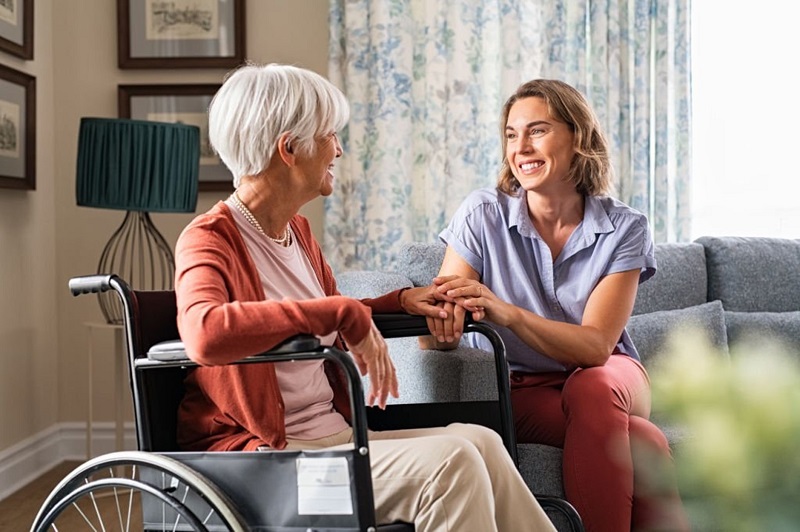How Technology is Revolutionizing Disability Accommodation

As technology advances at an incredible rate, we must ask ourselves how much of an impact it has on our everyday lives. For people with disabilities, revolutionary leaps in technology have led to a significant change in the way they interact with the world around them. With new and improved assistive devices, mobility aids, communication tools, and other innovations, the way we understand disability accommodation has been transformed. This article delves into the remarkable ways technology has altered the world of disability accommodation, making life easier and more efficient for those who need it the most.
-
Mobility Aids
As one of the foremost aspects of disability accommodation, mobility aids have seen substantial advancements thanks to technology. Some notable developments include:
- Power wheelchairs: These electric-powered wheelchairs have come a long way, now offering better battery life, navigation, seat adjustments, and ease of use. Innovative companies like WHILL have even created all-terrain models that allow users to explore previously inaccessible outdoor spaces.
- Prosthetic limbs: Advancements in prosthetic technology have provided amputees with improved movement, control, and aesthetic appeal. Some recent innovations include 3D-printed prosthetics, advanced sensors, and mind-controlled bionics.
- Exoskeletons: Robotic exoskeletons are a breakthrough technology designed to provide people with spinal cord injuries or limited mobility with the ability to stand and walk. These wearable devices contain motors, sensors, and software that work together to enable physical movement.
-
Assistive Devices
The world of assistive devices is flourishing, driven by the growing need for improved accessibility and inclusion. Some prominent examples include:
- Eyegaze technology: Enabled by infrared cameras and software, eyegaze technology allows users to navigate, select and interact with computer devices by simply moving their eyes. This can be especially useful for those with severe motor impairments or limited mobility.
- Refreshable braille displays: These devices have small, electromechanical pins that can be raised or lowered to form a single line of braille text, enabling blind or visually impaired users to read digital content on computers, smartphones, and other devices.
- Smart glasses: For people with low vision or visual impairments, smart glasses have the potential to improve their daily lives. Devices like eSight, for example, consist of lightweight, head-mounted displays that allow users to see in real time by adjusting settings like contrast or magnification.
-
Communication Tools
Improved communication technologies have the power to transform lives for those with disabilities. From cutting-edge software to simple applications, here are some of the most notable recent developments:
- Speech-to-text apps: Individuals with hearing impairments or communication difficulties can benefit from speech-to-text apps, which transcribe spoken words into readable text in real-time. Examples include Ava and Google Live Transcribe.
- Text-to-speech apps: Software like Voice Dream Reader and Natural Reader enable users to have digital content read out loud, providing alternatives to traditional reading for people with visual impairments or dyslexia.
- Augmentative and alternative communication (AAC) devices: AAC devices assist people with speech and language impairments in expressing their thoughts, needs, and desires. These can range from simple symbol-based systems to more advanced devices with touchscreen interfaces and text-to-speech output.
-
Home Automation
As smart homes become more prevalent, the benefits to individuals with disabilities are abundant. Some key features include:
- Voice-activated systems: Technologies such as Amazon Echo, Google Home, and Apple HomePod facilitate control of various home functions with simple voice commands, greatly enhancing accessibility for people with mobility impairments or visual disabilities.
- Smart lighting controls: Installing smart light switches, bulbs, or dimmers can make it easy for people with disabilities to control lighting conditions in their homes, whether they’re managing the intensity, color or powering the lights on or off.
- Automated door openers: Remote-controlled or motion-activated door openers provide increased safety and independence for wheelchair users or others with mobility impairments.
-
Education and Training
Technology is revolutionizing disability accommodation in education as well, allowing students with disabilities to access resources and learning opportunities previously unavailable to them. Key examples include:
- Assistive learning software: This type of software can make it possible for students with learning disabilities, dyslexia, or other challenges to access digital resources tailored to their needs.
- Virtual classrooms: For students who cannot physically attend school, technology enables them to connect with educators and peers in real-time, ensuring they receive the support and guidance needed for their academic success.
- Online training platforms: By offering accessible courses, certifications, and tutorials designed to cater to a wide range of disabilities, platforms like Coursera, edX, and Udemy have demonstrated the prominent role technology can play in inclusive education.
Conclusion
In a world where technology is inescapable and ubiquitous, it is imperative that we consider its potential impact on disability accommodation. New technologies offer numerous solutions for individuals with disabilities, making their lives more comfortable, efficient, and engaged with the world around them. While many remarkable innovations have already been developed, there is no doubt that we will continue to see even more incredible advancements in the years to come. As technology continues to revolutionize disability accommodation, it serves as a powerful reminder of the immense potential for positive change in our society’s treatment of those who are differently-abled.